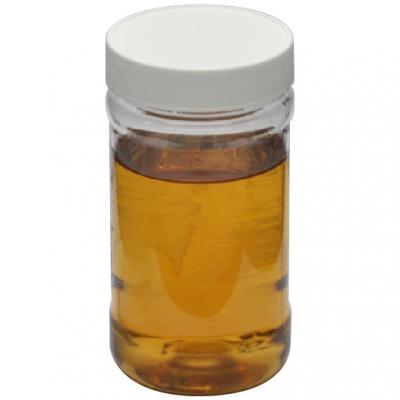Due to the influence of the non-stick pan produced by DuPont co., LTD., which can cause cancer in human body, the international market has also carried out research on the organic fluorine chemicals used in anti-water and anti-water pollution of textiles. The results show that the two kinds of organic fluorine chemicals which are used in the preparation of textile "three defense" finishing agents in the market are of potential stakes to human health.
1. PFOS
PFOS is an acronym for perfluorooctane sulfonates and sulfonates. Its structure is:

PFOS is one of the most difficult organic pollutants found in the world to date. It has very high biological accumulative and multiple virulence, there is high persistence in the environment, and over time it accumulates in the environment and accumulates in the body and animal tissues. It is possible to enter the food chain, and it can generate potential danger to the human health and ecological environment for a long time. It is said to cause problems in the body's respiratory system and often lead to infant deaths.
Experiments on animals have shown that animals contain 2 mg/kg of PFOS, which can lead to death. So on December 12, 2006, the European parliament passed a resolution and introduced a ban on PFOS. The limit rulse of PFOS for manufactured goods in European markets:
(1) the quality fraction of PFOS in the components of raw materials and preparations should not exceed 0.005% (i.e., 50 x 10-6);
(2) the limit of PFOS in the semi-product is 0.1% (i.e. 1, 000 x 10-6);
(3) the limit of PFOS in textiles and coating materials is 1 mu g/m2.
The ban was formally implemented on June 27, 2008, which marks the formal ban on PFOS being used in goods. The United States also ended the production and use of PFOS as early as 2001.
PFOS is mainly used to prepare water-repellent and anti-pollution agents. It is widely used in textiles, carpets, leather shoes, papermaking, washing, cosmetics, pesticides, firefighting agents and hydraulic oil. For example, Dicguard waterproof and anti-fouling agent of great Japan ink co., LTD. Its chemical name is n-acrylate - n-ethyl (or methyl) perfluorooctane sulfonamide, the structure is:

It is made of perfluorooctane sulfonyl halide, reacted with ethylamine and ethanolamine, and then introduced acrylic acid.
2. PFOA
PFOA is an abbreviation of perfluorosinic acid, also known as 15 fluorosinic acid, the structure is:

PFOA can also represent perfluorooctanate, used in a fire extinguishing foam, as a hydrophobic base carbon chain, perfluorocarbon fluorinated fluorinated surfactant is an important fluorine surfactant which is often used in textile "three defense" at home and abroad. For example, Scotchguard fc-805, the "triple proof" finishing agent of 3M in the United States, is a full fluorocarbon chromate complex with the reaction of PFOA and chromium trichloride. Studies show that the effect of perfluoric acid on environmental protection and human health is similar to that of PFOS. Although there is still greater scientific uncertainty about the potential danger of perfluoric acid, and how it is transferred to the environment and how it does harm to the human body is not established and confirmed. The U.S. environmental protection agency (EPA) believes that more scientific information is needed to assess whether it is disabled or restricted. The EU also did not say, but in its ban on PFOS it raised doubts that PFOA and its salt had similar risks to PFOS, but PFOA's potential dangers to the human body and environment are accepted by the public.
Therefore, many textile companies and brand textile sellers in the world have explicitly banned PFOA and its salt in their chemical restrictions. They requested that they not be tested on textiles. The EPA has also proposed the PFOA voluntary reduction plan, which calls for a 95 percent reduction in PFOA emissions by U.S. companies in 2010 and realized zero emissions by 2015. In addition, recently, PFOS and PFOA are also found in the water quality survey in China. For example, PFOS was detected in the Huangpu river as 26.46 mg/L, PFOA was 159.83mg/L, this is highly valued. Currently, the detection of PFOS and PFOA in the market is based on solvent extraction and then the analysis of LC/MS.
In view of the environmental and human hazards of PFOS and PFOA, their substitutions are of public concern, with approximately the following 6 types.
(1) perfluorinated sulfonate PFBS, the waterproof and dirt resistant finishing agent prepared by this method: Scotchguard, PM-3622, PM-3630, and has super waterproof function; Scotchguard, PM-492 PM-930, has the advantages of easy decontamination function; Scotchguard FC-226, with moisture absorption and easy decontamination function. These varieties are compared with the products made from PFOS, there is still a considerable gap in oil repellency.
(2) perfluorohexane sulfonate (PFHS), the water-repellent anti-pollution finishing agent made by it: Nuva N2114 liq. It is a kind of environmentally friendly ultra-durable fluorine repellent finishing agent without PFOA (in the detection limit of 20 x 10-9). Nuva N4118 liq is a fluorine-free decontamination agent without PFOA and PFOS; Asahiguard e-series AG-E061 is a fluorine-resistant and repellent finishing agent without PFOA. Unidyne MultiSeries is a new type of waterproof and oil-repellent finishing agent, which has not PFOA (in the detection limit of 5 x 10-9), PFOS and APEO. But there are many problems with their oil repellency, it can be seen from the comparison of oil repellency (Table 2)

(3) nanotype fluorine finishing agent, Rudolf has developed two series of new products based on bionic and nanotechnology: the ruco-dry series (excluding fluorine) and the ruco-star series (including fluorine), the products that can be used for all fibrous fabrics are Rucostar, such as Rucostar EEE, EEN, EEW, etc. They have low fluorine content, no APEO and PFOS, PFOA content of no more than 1 x 10-6, they are made by adding special additives (fluorocarbon polymers) and dendritic polymers in the nanometer range to obtain waterproof, oil-repellent and anti-fouling effects. The sp-160 developed by Taip (Shanghai) fluorine chemical trading co., LTD. is also a fluorine-containing tri-antifinishing agent.
(4) compound containing fluoride finishing agent, because of the ordinary hydrocarbon surfactant in the water delta C>25 mN/m,the delta C of the surfactant in the water is 20~35 mN/m, the delta C of polyacrylate hydrocarbons in water is 4.3~9.3 mN/m, they're smaller than the finishing agents that contain fluoroalkane. Therefore, the fluorine surfactant and hydrocarbon surfactant are recombined. They can achieve the water repellent and oil repellent properties of fluorinated surfactant in the case of greatly reducing the amount of fluorine-containing surfactant and reducing the cost, it also reduces the pollution of PFOS and PFOA, making them less than the limit in the final product.
(5) acrylic fluorocarbon ester resin (Asahiguard AG- 480, etc.).
(6) polytetrafluoroethylene (with some degree of polymerization degree), can be conjunctivated on the textile under certain conditions, and has a better function of water-proof and oil-repellent.



 English
English  日本語
日本語  Español
Español  tiếng việt
tiếng việt  Türkçe
Türkçe  ไทย
ไทย  українська
українська  हिंदी
हिंदी  বাঙালি
বাঙালি  اردو
اردو 


